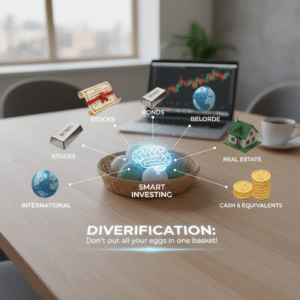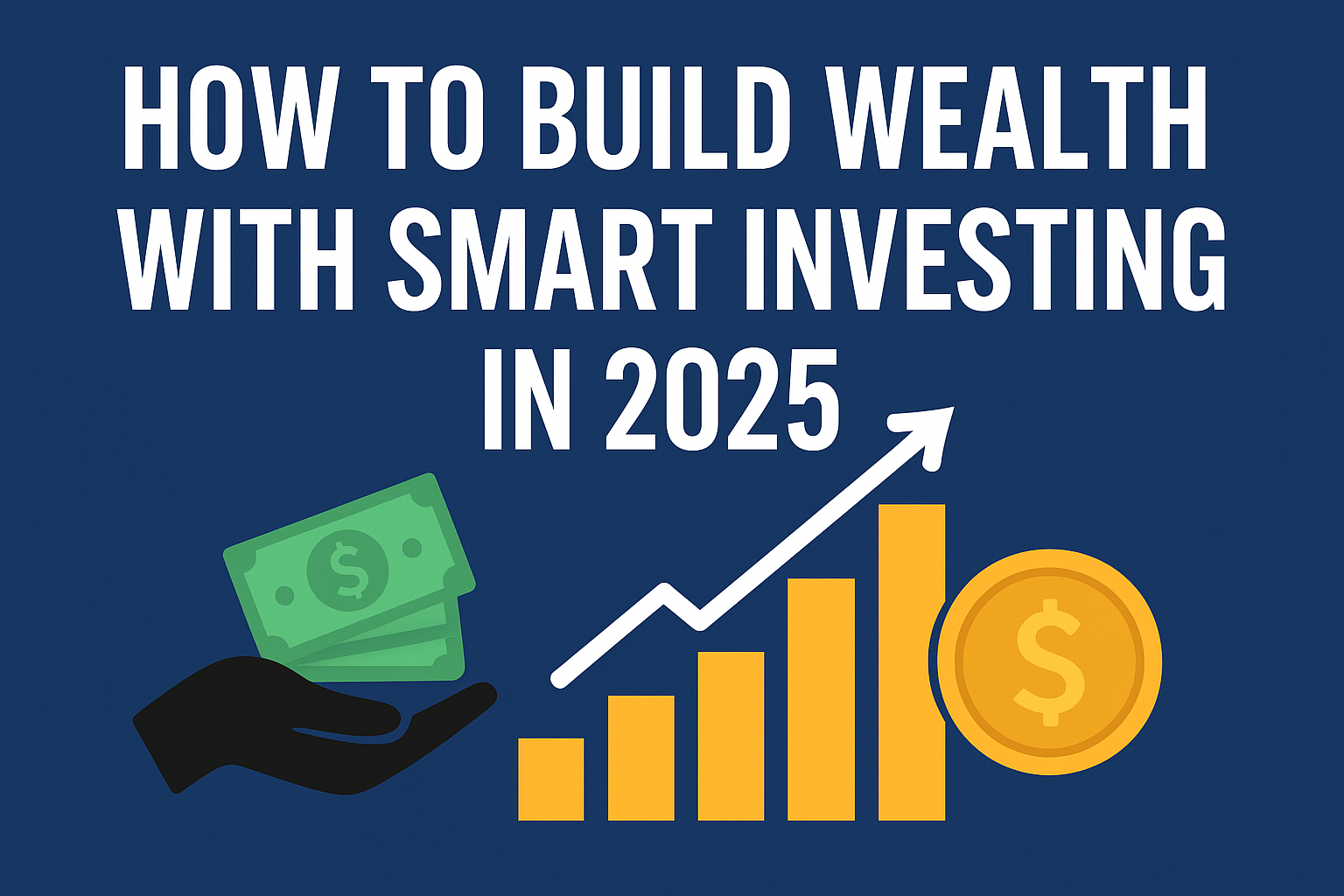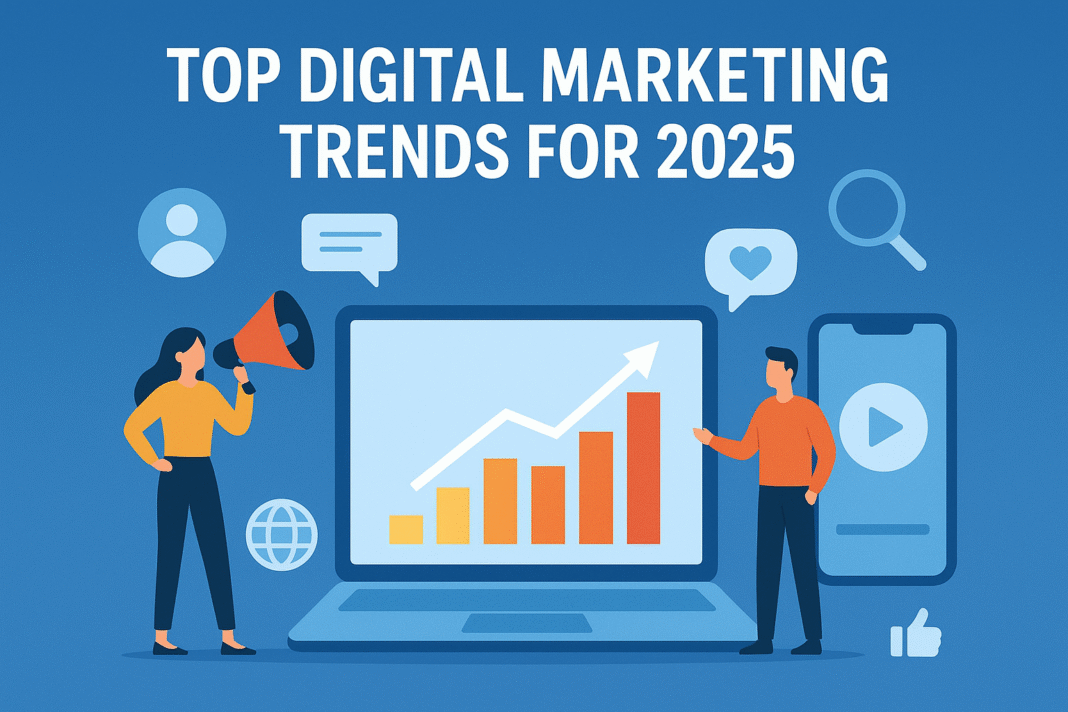Introduction to Smart Investing

2025 is a golden opportunity to start building wealth through smart investing. With technology evolving, new markets opening, and smarter financial tools available, there has never been a better time to grow your money. But remember—wealth doesn’t just come from earning; it comes from making your money work for you.
Why 2025 is the right year to start investing
The global economy is adapting to AI, blockchain, and digital transformation. Investors who take action now can benefit from compounding returns and early positioning in new industries.
The importance of financial literacy
Smart investing begins with knowledge. Without understanding how money grows, risks, and strategies, even high earners can remain broke.
Understanding the Basics of Wealth Building

Difference between income and wealth
Income is what you earn; wealth is what you keep and grow. A high salary means nothing if you spend it all.
Compound growth and its power
Albert Einstein called compounding the “eighth wonder of the world.” A small investment, if consistent, can snowball into significant wealth over time.
The MBC Framework (Mindset, Budget, Commitment)
- Mindset: Believe wealth is possible through discipline.
- Budget: Control spending and allocate funds for investment.
- Commitment: Stay consistent regardless of market ups and downs.
Step 1 – Build the Right Mindset for Investing
You can’t build wealth if you think like a spender. Train yourself to prioritize assets over liabilities.
Shifting from spending to investing mentality
Instead of buying the latest phone, ask: Can this money earn me more if invested?
Long-term vision vs short-term gains
Wealth is a marathon, not a sprint. Chasing quick profits often leads to losses.
Step 2 – Budgeting and Financial Discipline
Creating an investment-friendly budget
Set aside at least 20% of your income for investments. Pay yourself first before spending.
Avoiding lifestyle inflation
As income grows, resist the urge to overspend. Wealthy people grow assets, not expenses.
Emergency fund importance
Before investing, keep 3–6 months of expenses in a liquid savings account.
Step 3 – Exploring Smart Investment Options in 2025
Stock market investing
- Growth stocks: Companies with high growth potential.
- Dividend stocks: Pay regular cash flow to investors.
Exchange-Traded Funds (ETFs)
Perfect for beginners—diversified, low-cost, and less risky.
Real Estate (REITs and property investment)
Real estate remains a stable wealth-builder. REITs allow small investors to join the market without huge capital.
Cryptocurrency and blockchain assets
Crypto is volatile but can provide high returns. Focus on projects with real-world utility.
Bonds and fixed income opportunities
Safe, steady, and great for balancing risk.
Artificial Intelligence-powered investing
AI tools analyze markets and suggest data-driven moves.
Step 4 – Diversification Strategy
Never rely on one type of investment. Spread risk across stocks, real estate, crypto, and bonds.
Step 5 – Risk Management in 2025
Understanding risk tolerance
Young investors can take more risks, while older investors should focus on safer assets.
Protecting against market volatility
Use stop-loss strategies and diversify to reduce potential losses.
Step 6 – Commitment and Consistency
Dollar-cost averaging strategy
Investing a fixed amount monthly reduces risk from market fluctuations.
Staying invested during downturns
Markets recover—don’t panic sell.
Technology and Tools for Smart Investing in 2025
AI-based robo-advisors, stock-tracking apps, and portfolio analyzers make investing smarter and easier.
Common Mistakes to Avoid in Wealth Building
- Chasing hype trends without research
- Ignoring fees and taxes that eat profits
- Selling too quickly due to fear
Building Multiple Income Streams Through Investing
- Dividends provide passive income.
- Real estate rentals give monthly cash flow.
- Online side hustles diversify your wealth sources.
The Role of Patience and Time in Wealth Growth
Why wealth is not built overnight
Most millionaires built wealth over 10–20 years—not overnight.
Best Practices for Smart Investing in 2025
- Invest in what you understand.
- Keep upgrading your knowledge.
- Don’t hesitate to ask experts.
Advantages of Smart Investing in 2025
- Power of Compounding
When you invest consistently, your money earns returns, and those returns generate more returns. Over time, this snowball effect builds serious wealth.
- Access to Advanced Technology
AI-driven robo-advisors and data-powered apps now make investing smarter and easier. You don’t need to be a financial expert—technology helps optimize decisions.
- Diversification Opportunities
From stocks and ETFs to crypto, REITs, and green energy projects, 2025 offers diverse investment options. This lowers risk and opens multiple wealth streams.
- Passive Income Creation
Smart investments such as dividend stocks, real estate rentals, and bonds can provide steady income without active effort.
- Inflation Protection
Investing in assets like real estate, gold, and index funds helps protect your money’s value against rising inflation.
Disadvantages of Smart Investing in 2025
- Market Volatility
Cryptocurrencies, stocks, and even real estate can experience ups and downs. If you panic sell, you risk losing money.
- Requires Financial Discipline
Investing is not a get-rich-quick plan. Without patience, budgeting, and consistency, it’s easy to give up too soon.
- Risk of Following Hype
Social media often promotes “hot” investments. Jumping in without research can lead to big losses.
- Fees and Hidden Costs
Certain investments, especially actively managed funds, charge high fees that can eat into your returns over time.
- Emotional Stress
Watching markets rise and fall daily can create anxiety. Emotional decisions often ruin long-term strategies.
Conclusion
Building wealth in 2025 is not about luck—it’s about smart investing, patience, and discipline. By following the MBC framework and leveraging technology, anyone can grow wealth step by step. The earlier you start, the more powerful compounding becomes.
FAQs
Q1: What is the best investment for beginners in 2025?
ETFs and index funds are the best starting points.
Q2: How much money do I need to start investing?
You can start with as little as $10 using fractional shares or micro-investing apps.
Q3: Is cryptocurrency still worth investing in 2025?
Yes, but only as a small portion of a diversified portfolio.
Q4: How long does it take to build wealth through investing?
With consistency, meaningful results appear within 5–10 years.
Q5: What is the safest way to invest money in 2025?
Diversification across stocks, bonds, and real estate remains the safest path.







